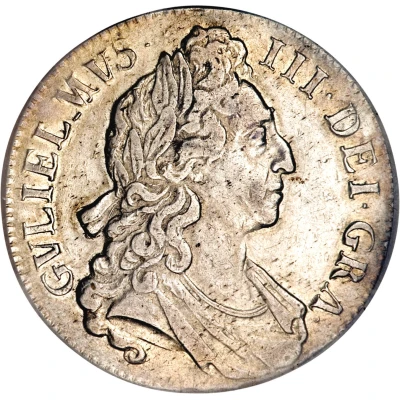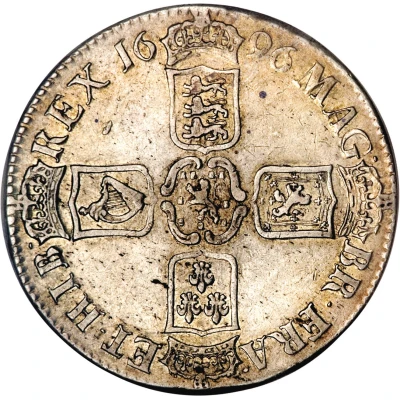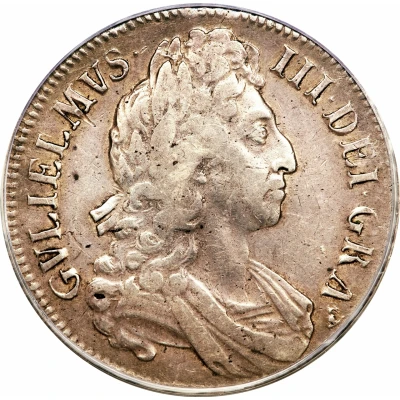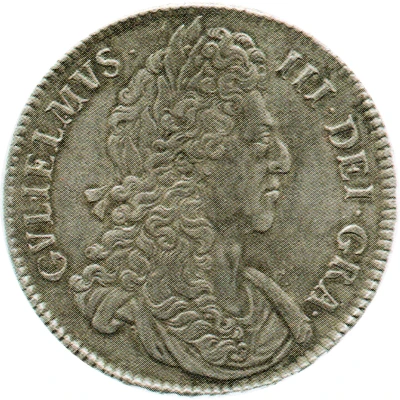
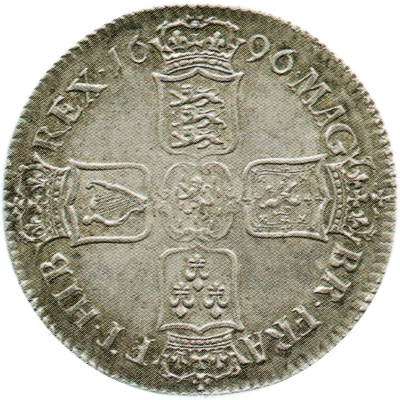

© Spink and Son
1 Crown - William III 2nd bust
1696 year| Silver (.925) | 30.1 g | 38.6 mm |
| Issuer | England (United Kingdom, British Overseas Territories and Crown Dependencies) |
|---|---|
| King | William III (1694-1702) |
| Type | Standard circulation coin |
| Year | 1696 |
| Value | 1 Crown |
| Currency | Pound sterling (1158-1970) |
| Composition | Silver (.925) |
| Weight | 30.1 g |
| Diameter | 38.6 mm |
| Shape | Round |
| Technique | Milled |
| Orientation | Coin alignment ↑↓ |
| Demonetized | Yes |
| Updated | 2024-10-08 |
| Numista | N#12970 |
|---|---|
| Rarity index | 100% |
Reverse
Crowned cruciform shields around central Nassau lion, divided date above, legend around.
Note: second harp to left shield
Script: Latin
Lettering: MAG BR·FRA ET·HIB REX·16 96·
Translation: King of Great Britain France and Ireland
Engraver: John Roettier
Edge
Regnal year in Latin
Lettering: OCTAVO
Translation: Eighth
Comment
Spink Standard Catalogue of British Coins (52nd Ed. 2017) lists each of two varieties as being unique.The standard weight of this coin was 30/31 troy ounce or 464.5 grains.
Interesting fact
One interesting fact about the 1696 William III 1 Crown coin is that it was minted during a time of great economic and political change in England. The coin was issued during the reign of William III, who ruled from 1689 until his death in 1702. During his reign, England was facing significant economic challenges, including a severe shortage of coinage and a growing national debt. To address these issues, William III introduced a new coinage system, which included the 1 Crown coin, to help stabilize the economy and promote trade. The coin was made of silver and had a standardized design, which helped to establish trust and confidence in the currency. Despite the challenges of the time, the 1696 William III 1 Crown coin remains a valuable and sought-after collector's item to this day.
